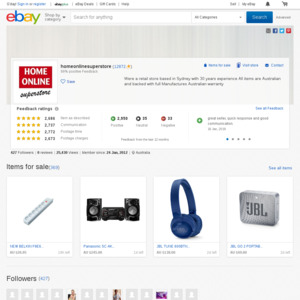Good tv for the price (this just replaced a Hisense N6 that I bought and had issues with), especially for anyone that’s looking to get a 4K HDR TV for their PS4 Pro or Xbox One X without spending too much.
This is well and truly the cheapest price it has been so far.
Full specs here
www.sony.com.au/electronics/televisions/x7000e-series/specif…
49 inch model available for $793.60 www.ebay.com.au/itm/Sony-Bravia-49-KD49X7000E-4K-HDR-TV/2226… - thanks Noddy





Outstanding price